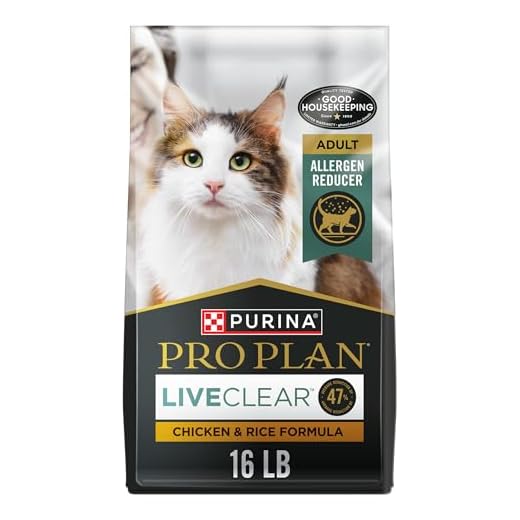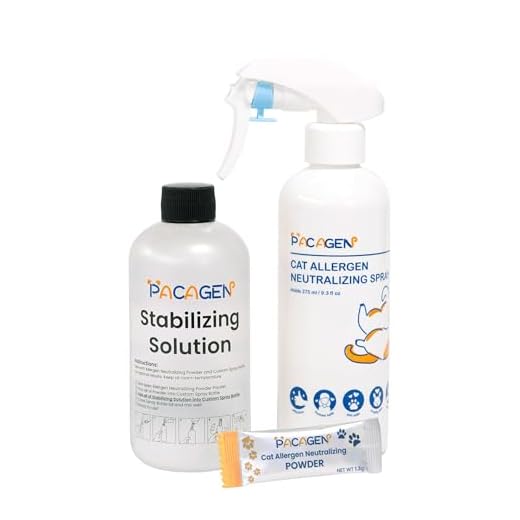



Excessive grooming can lead to bald patches and skin irritation, which signals that something may be off. If you notice that I’m focused on my coat more than usual, it’s time to check in with a vet. Stress, allergies, or skin conditions are common culprits behind this behavior.
Creating a calm environment is essential. Provide cozy spots and interactive toys to keep me engaged. If I seem anxious or bored, consider introducing new activities or routines that can ease my mind. Regular playtime can significantly reduce stress levels.
Monitor my diet as well. A balanced meal is key to maintaining a healthy coat. If I’m eating the same food day in and day out, I might not be getting the nutrients I need. Look for high-quality options that support skin health and coat shine.
If changes persist, a visit to the vet is crucial. They can help rule out any underlying issues, from parasites to dermatological conditions. Remember, my well-being depends on your attention and care!
Identifying Underlying Health Issues in Felines
If unusual grooming behavior occurs, consult a veterinarian to rule out skin conditions, allergies, or parasites. Common issues include dermatitis, which may result from irritants or infections. Fleas and mites can also trigger excessive grooming, leading to bald patches.
Observing Behavioral Changes
Monitor for signs such as changes in appetite, weight loss, or lethargy. These can indicate underlying medical conditions affecting well-being. Stress-related behaviors, like over-grooming, may arise from environmental changes or social dynamics at home. Keep a journal of behaviors and any potential triggers to discuss with the veterinarian.
Regular Health Check-ups
Routine veterinary visits are crucial for early detection of health issues. Vaccinations and parasite control contribute to overall health and can prevent complications. Blood tests and skin scrapings may be necessary to identify specific conditions. A proactive approach helps maintain a happy, healthy lifestyle.
Understanding Behavioral Triggers for Fur Licking
When I notice a fellow feline excessively grooming, it’s often a reaction to environmental factors. Stress from changes, such as a new pet or relocation, can drive this behavior. Keeping a calm atmosphere is essential. Engaging toys and comfortable resting places can reduce anxiety. For those with vertical peeing tendencies, consider the best litter box for vertical peeing cats to promote comfort.
Addressing Boredom and Excess Energy
Routine playtime is crucial. A bored companion may resort to grooming as a pastime. Incorporating interactive toys and scheduled play sessions helps redirect that energy. If they seem restless, introducing new activities can stimulate their mind. Look for puzzle toys or climbing structures to keep them occupied.
Allergies and Sensitivities
Environmental irritants can trigger excessive grooming. Dust, pollen, or even certain candles may provoke reactions. For those wondering about safety, check if are beeswax candles safe for cats. Keeping the living space clean and free from allergens can significantly help. Regular cleaning and monitoring for any signs of irritation will aid in maintaining a healthy environment.
Video:
Excessive grooming can lead to bald patches and skin irritation, which signals that something may be off. If you notice that I’m focused on my coat more than usual, it’s time to check in with a vet. Stress, allergies, or skin conditions are common culprits behind this behavior.
Creating a calm environment is essential. Provide cozy spots and interactive toys to keep me engaged. If I seem anxious or bored, consider introducing new activities or routines that can ease my mind. Regular playtime can significantly reduce stress levels.
Monitor my diet as well. A balanced meal is key to maintaining a healthy coat. If I’m eating the same food day in and day out, I might not be getting the nutrients I need. Look for high-quality options that support skin health and coat shine.
If changes persist, a visit to the vet is crucial. They can help rule out any underlying issues, from parasites to dermatological conditions. Remember, my well-being depends on your attention and care!
Identifying Underlying Health Issues in Felines
If unusual grooming behavior occurs, consult a veterinarian to rule out skin conditions, allergies, or parasites. Common issues include dermatitis, which may result from irritants or infections. Fleas and mites can also trigger excessive grooming, leading to bald patches.
Observing Behavioral Changes
Monitor for signs such as changes in appetite, weight loss, or lethargy. These can indicate underlying medical conditions affecting well-being. Stress-related behaviors, like over-grooming, may arise from environmental changes or social dynamics at home. Keep a journal of behaviors and any potential triggers to discuss with the veterinarian.
Regular Health Check-ups
Routine veterinary visits are crucial for early detection of health issues. Vaccinations and parasite control contribute to overall health and can prevent complications. Blood tests and skin scrapings may be necessary to identify specific conditions. A proactive approach helps maintain a happy, healthy lifestyle.
Understanding Behavioral Triggers for Fur Licking
When I notice a fellow feline excessively grooming, it’s often a reaction to environmental factors. Stress from changes, such as a new pet or relocation, can drive this behavior. Keeping a calm atmosphere is essential. Engaging toys and comfortable resting places can reduce anxiety. For those with vertical peeing tendencies, consider the best litter box for vertical peeing cats to promote comfort.
Addressing Boredom and Excess Energy
Routine playtime is crucial. A bored companion may resort to grooming as a pastime. Incorporating interactive toys and scheduled play sessions helps redirect that energy. If they seem restless, introducing new activities can stimulate their mind. Look for puzzle toys or climbing structures to keep them occupied.
Allergies and Sensitivities
Environmental irritants can trigger excessive grooming. Dust, pollen, or even certain candles may provoke reactions. For those wondering about safety, check if are beeswax candles safe for cats. Keeping the living space clean and free from allergens can significantly help. Regular cleaning and monitoring for any signs of irritation will aid in maintaining a healthy environment.
Video:
Excessive grooming can lead to bald patches and skin irritation, which signals that something may be off. If you notice that I’m focused on my coat more than usual, it’s time to check in with a vet. Stress, allergies, or skin conditions are common culprits behind this behavior.
Creating a calm environment is essential. Provide cozy spots and interactive toys to keep me engaged. If I seem anxious or bored, consider introducing new activities or routines that can ease my mind. Regular playtime can significantly reduce stress levels.
Monitor my diet as well. A balanced meal is key to maintaining a healthy coat. If I’m eating the same food day in and day out, I might not be getting the nutrients I need. Look for high-quality options that support skin health and coat shine.
If changes persist, a visit to the vet is crucial. They can help rule out any underlying issues, from parasites to dermatological conditions. Remember, my well-being depends on your attention and care!
Identifying Underlying Health Issues in Felines
If unusual grooming behavior occurs, consult a veterinarian to rule out skin conditions, allergies, or parasites. Common issues include dermatitis, which may result from irritants or infections. Fleas and mites can also trigger excessive grooming, leading to bald patches.
Observing Behavioral Changes
Monitor for signs such as changes in appetite, weight loss, or lethargy. These can indicate underlying medical conditions affecting well-being. Stress-related behaviors, like over-grooming, may arise from environmental changes or social dynamics at home. Keep a journal of behaviors and any potential triggers to discuss with the veterinarian.
Regular Health Check-ups
Routine veterinary visits are crucial for early detection of health issues. Vaccinations and parasite control contribute to overall health and can prevent complications. Blood tests and skin scrapings may be necessary to identify specific conditions. A proactive approach helps maintain a happy, healthy lifestyle.
Understanding Behavioral Triggers for Fur Licking
When I notice a fellow feline excessively grooming, it’s often a reaction to environmental factors. Stress from changes, such as a new pet or relocation, can drive this behavior. Keeping a calm atmosphere is essential. Engaging toys and comfortable resting places can reduce anxiety. For those with vertical peeing tendencies, consider the best litter box for vertical peeing cats to promote comfort.
Addressing Boredom and Excess Energy
Routine playtime is crucial. A bored companion may resort to grooming as a pastime. Incorporating interactive toys and scheduled play sessions helps redirect that energy. If they seem restless, introducing new activities can stimulate their mind. Look for puzzle toys or climbing structures to keep them occupied.
Allergies and Sensitivities
Environmental irritants can trigger excessive grooming. Dust, pollen, or even certain candles may provoke reactions. For those wondering about safety, check if are beeswax candles safe for cats. Keeping the living space clean and free from allergens can significantly help. Regular cleaning and monitoring for any signs of irritation will aid in maintaining a healthy environment.










